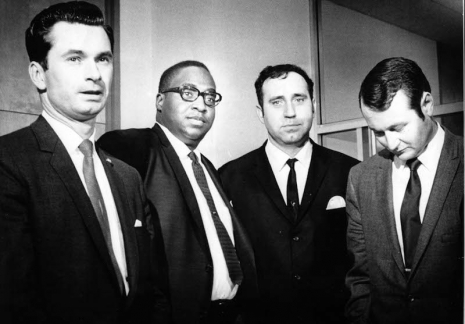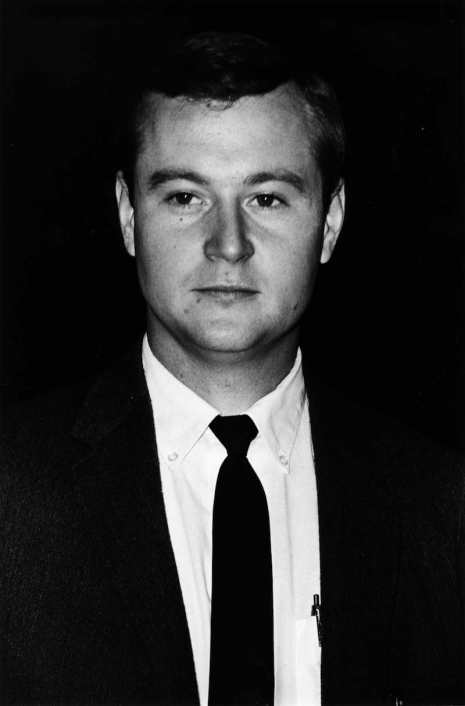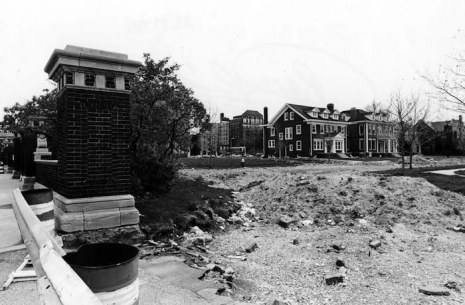
At 2:00 am on July 26th, 1967, the Detroit Police Department received a call: “At the Algiers Motel, check for dead persons.” When police arrived, they found the bodies of three black teenagers. It was Day 4 of rioting in the city, which would prove to be one of the most damaging community events in American history. What became known as “the Algiers Motel incident” is the most infamous episode to take place during the uprising.
There were a number of issues in the city of Detroit that led to the July 1967 rebellion (it’s still debated how the event should be categorized), but police brutality—namely the use of violence by the largely white police force against the city’s majority black residents—was front and center. During the early hours of July 23rd, police raided a blind pig located at 12th Street and Clairmount Avenue on the city’s near west-side. As rumors circulated that officers had beaten some of those arrested, a young black man threw a rock at a cop car. It wasn’t long before someone broke a store window and people began looting. Hundreds of fires were set over the next few days, as residents clashed with local and state police, and eventually the National Guard, while looting continued. On July 27th, order was restored and the disturbance officially ended. All told, they were over 7,000 arrests, nearly 1,200 injuries, and 43 people died. Many of those who lost their lives were killed because they were—mistakenly—thought to have been snipers.

12th Street, July 23rd, 1967.

National Guardsmen, with weapons drawn, as city residents look on.

A National Guardsman watches for snipers amidst the chaos.
Not long after midnight on the morning of July 26th, sniper fire was reported coming from the area around the Algiers Motel—specifically the Algiers manor house, which was adjacent to the Woodward Avenue motel on Virginia Park Street. Police and National Guardsmen moved in quickly on the manor. By the time law enforcement left the scene, Aubrey Pollard, 19, Fred Temple, 18, and Carl Cooper, 17, were dead. Five days later, the Detroit News broke the story. In his 1968 book on the subject, The Algiers Motel Incident, author John Hersey noted what had become evident.
It is by now, on Monday, July 31, clear that the killings in the Algiers were not executions of snipers, looters, or arsonists caught red-handed in felonious crimes in the heat of a riot, but rather that they were murders embellished by racist abuse, indiscriminate vengeance, sexual jealousy, voyeurism, wanton blood-letting, and sadistic physical and mental tortures characterized by the tormentors as ‘a game.’
The Algiers Motel Incident was written quickly and was controversial upon release; Hersey received much in the way of criticism for its seemingly haphazard structure. Reading it nearly fifty years after it was published, I would argue that the narrative is purposeful, with often powerful results. Hersey interviewed everyone he could, including traumatized witnesses, distraught family members, and, incredibly, the security guard and three police officers suspected of wrongdoing. The book is undeniably harrowing and heartbreaking.

Aubrey Pollard’s parents: Aubrey Pollard, Sr. and Rebecca Pollard. Their grief is palpable in the pages of ‘The Algiers Motel Incident.’
When I’m not writing for Dangerous Minds, I’m working as an archivist at the Walter P. Reuther Library, which is a part of Wayne State University in Detroit. Danielle L. McGuire, an associate professor in the history department at Wayne State, has been conducting research at the Reuther for a book she is writing on the Algiers episode. Her essay, “Murder at the Algiers Motel,” has been included in the new anthology, Detroit 1967, published by Wayne State University Press. We have an excerpt from Danielle’s stirring account of the waking nightmare that was the Algiers Motel incident.

View of the Algiers Motel, with the manor in the background, July 1967.
In the early-morning hours of July 26, 1967, a flurry of Detroit police officers, National Guardsmen, and state police officers, led by Senak and two of his colleagues, raided the Algiers Motel after hearing reports of heavy “sniper fire” nearby. The Algiers, a once-stately manor house in the Virginia Park neighborhood of central Detroit, was a relatively seedy place, what Hersey described as a “transient” hotel, with a reputation among police as a site for narcotics and prostitution. But that night, because of the uprising and citywide curfew, many people sought refuge at the Algiers, including two white runaways from Ohio, a returning Vietnam veteran, and the friends and members of the Dramatics, a doo-wop group who performed songs like “Inky Dinky Wang Dang Do” at the Swinging Time Revue, headlined by Martha Reeves and the Vandellas, downtown at the Fox Theater.
According to one witness quoted in the Detroit News on August 2, it was a “night of horror and murder.” Just past midnight, police and soldiers tore through the motel’s tattered halls and run-down rooms with shotguns and rifles. They ransacked closets and drawers, turned over beds and tables, shot into walls and chairs, and brutalized motel guests in a desperate and vicious effort to find the “sniper.” At some point during this initial raid, David Senak and Patrolman Robert Paille encountered Fred Temple, a teen on the phone with his girlfriend. Senak and Paille barged into the room, startling Temple, who dropped the phone. According to Senak, quoted in Sidney Fine’s Violence in the Model City, he and Paille fired “almost simultaneously” at Temple, who crumpled to the ground in a pool of blood.
When Senak and Paille failed to find any weapons, Senak ordered all the guests against the wall in the first-floor lobby. One of the young black men at the hotel that night, seventeen-year-old Carl Cooper, rushed down the stairs and came face-to-face with a phalanx of heavily armed police and guardsmen. A witness, quoted in a report by Detective Inspector Albert Schwaller, heard Cooper say, “Man, take me to jail—I don’t have any weapon,” just before hearing the gunshot that tore through his chest.
Police herded the other guests, a group of young black men and two white women, past Cooper’s bloody corpse, into the gray and beige magnolia- papered lobby, and told them to face the east wall with their hands over their heads. Even though two young men were already dead, the lineup was the beginning of what Hersey called the “death game.”
The details of exactly what happened next are complicated and convoluted—clear memories forever lost to the chaos of the moment, the tricks of time, and the disparate recollections of the survivors traumatized by violence and terror. But this is the gist of what we know: three Detroit policemen, David Senak, Ronald August, and Robert Paille, and a private guard, Melvin Dismukes, took charge of the brutal interrogation. They wanted to know who had the gun, who was the sniper, and who was doing the shooting.

L-R: Ronald August, Melvin Dismukes, Robert Paille and David Senak. Federal conspiracy trial, February 25th, 1970.
When the young men and women who were lined up against the wall denied shooting or having any weapons, the officers mercilessly beat them, leaving gashes and knots on the victims’ heads and backs. According to another witness interviewed by Schwaller, a police officer “struck [a] Negro boy so hard that it staggered [him] and almost sent him down to his knees.” A military policeman, part of the contingent of federal paratroopers and National Guardsmen sent to help restore order in Detroit, who arrived at the Algiers in the midst of the raid, is cited by Fine as seeing a Detroit patrolman “stick a shotgun between the legs of one male and threaten to ‘blow his testicles off.’” Senak and his colleagues raged against the two white women working as prostitutes at the Algiers, Karen Malloy and Juli Hysell, calling them “white niggers” and “nigger lovers.” Both women testified that police ripped off their dresses, pushed their faces against the wall, and smashed guns into the their temples and the small of their backs. Roderick Davis, the stocky Dramatics singer who sported a stylish conk and moustache, told Hersey that Senak sneered, “Why you got to fuck them? What’s wrong with us?” Another witness told Schwaller that he heard one of the cops say, “We’re going to get rid of all you pimps and whores.”
Then, the “death game” really began. The police pulled the unarmed men one by one into different rooms and interrogated them at gunpoint. Davis told Schwaller that Senak took him into a room, forced him to lie down, and then shot into the floor. “I’ll kill you if you move,” Senak said as he left the room and returned to the lobby.

David Senak, c. 1970.
“Want to shoot a nigger?” Senak asked Warrant Officer Theodore Thomas, as he grabbed the diminutive, baby-faced nineteen-year-old Michael Clark out of the line, pulled him into the same room, pushed him down, and fired at the ceiling. Senak told Thomas to stay with Davis and Clark and keep quiet. Then Senak returned to the lobby and, according to others, handed twenty-eight-year-old DPD officer Ronald August a shotgun. “You shoot one,” he ordered.
“Now comes the tragic part,” August wrote five days after the Algiers assault in a statement now held in the Detroit Police Department’s “Algiers Motel” file. With help from Norman Lippitt, the lead attorney from the Detroit Police Officers Association (DPOA), August described the circumstances under which he shot and killed nineteen-year-old Aubrey Pollard. In that final “official” statement, which Lippitt likely typed up, August said that Pollard lunged at him and tried to take his gun and that he had no choice but to defend himself by fatally shooting the black teenager. But the self-serving justification was not in August’s original written or oral statements. His first confession, after some sleepless nights, was to his sergeant, whom he pulled aside to quietly say he shot a young man at the Algiers Motel. He mentioned nothing about self-defense. That part came later.

L-R: Norman Lippitt and Ronald August, c. 1970.
When the FBI began an investigation of the police for violating the civil rights of the youth they killed, even J. Edgar Hoover had to admit, in a private memo at least, that their official statements were “for the most part untrue and were undoubtedly furnished in an effort to cover their activities and the true series of events.”
The surviving witnesses’ testimony contradicted August’s claim of self-defense. After hearing the thud of Aubrey Pollard’s body on the floor and seeing Patrolman August flee out the front door, where he vomited near a tree, police ordered the remaining survivors, terrified and spread-eagle against the blood-spattered lobby wall, to leave. The white girls were bruised and nearly naked; their torn clothes lay in a heap on the floor. Davis recounted to Hersey that a cop said, “Start walking with your hands over your head. If you look back, we’ll kill you.”
As Roderick Davis, Michael Clark, and the others staggered toward the French doors that opened to the Algiers’s back porch, they passed Carl Cooper’s prostrate body, a reminder that for some there was no escape from the terror that night.

Order Detroit 1967: Origins, Impacts, Legacies via Wayne State University Press or Amazon.
The four men accused of committing the horrific acts that took place at the Algiers Motel—Senak, Paille, August and Dismukes—were brought up on various charges, but in every instance the verdict was not guilty or the case was dismissed. As the decision was read at the Ronald August trial—in which he was charged with the murder of Aubrey Pollard—Rebecca Pollard, the mother of Aubrey, was visibly stunned and had to be helped from the courtroom.

I asked Danielle L. McGuire a few questions via email.
Had excessive force been an issue for the three police officers involved in the incident?
Danielle L. McGuire: Senak had already killed a “looter,” Joseph Chandler, on July 25th. He was in Vice and was known within the DPD as a hardline, cowboy type character.
Why do you think that none of the officers, nor the security guard, where convicted of any wrongdoing related to the incident?
Danielle L. McGuire: There are lots of reasons that all added up. 1. The cops were white and the victims were black; 2. The judges often sided with the police; 3. The prosecutor made some mistakes that hurt him in court; 4. Conspiracy is hard to prove; 5. The victims’ memories were faulty and the defense lawyer, Norman Lippitt, preyed on this to make it seem like they were untrustworthy; 6. All-white juries sided with police; 7. White fear and resentment about the “riot” made the victims less sympathetic to the public; 8. Lippitt used the publication and marketing of Hersey’s book to have Ronald August’s murder trial moved to Mason, Michigan, an all-white town that made the jury all-white as well; 9. Federal Civil Rights case moved to Flint, another all-white jury.
What do you think of John Hersey’s book?
Danielle L. McGuire: Hersey did an incredible thing—he raced to Detroit and got hours upon hours of eye-witness testimony about what happened at the Algiers Motel. He took that testimony, transcribed it and stitched it together in a kind of narrative. But it is incomplete because he published it before the trials were finished (or, in the case of the federal civil rights trial, had even begun).
As part of your research, have you spoken to anyone still alive connected to the incident?
Danielle L. McGuire: Yes. I’ve talked to Larry Reed [Fred Temple’s friend and a witness], Melvin Dismukes, Norman Lippitt, some people who stayed in the Algiers Motel proper, and a few others.
*****
Danielle L. McGuire’s book, A Murder in the Motor City will be published by Knopf. Follow her on Twitter.
I was part of the Reuther Library team that produced the 12th Street, Detroit, 1967 display, which examines the years leading up to the ‘67 disturbance, the event itself, as well as the aftermath. It will be in the Reuther’s atrium through January. There’s also an interactive, web-based version of the exhibit.
Detroit, Hollywood’s take on what happened 50 years ago in the city, will soon hit the big screen. Directed by Kathryn Bigelow, the film’s narrative revolves around the Algiers Motel incident, though it is not an adaptation of John Hersey’s book. Hersey, who died in 1993, steadfastly refused to allow his work to be licensed for such use—honoring a promise he made to those he interviewed for it—and instructed his heirs to do the same. Detroit will be released on August 4th.
In October 1967, a county court declared that the Algiers Motel was a “public nuisance”; the motel was eventually torn down in 1979. The manor had already been removed by then. The former Algiers site is now a park.

20 years on: A partial view of the former Algiers Motel location, with the spot where the manor once stood visible in the center of the photograph, July 31st, 1987.
All images used for this article (excluding the composite of the three victims) courtesy of the Walter P. Reuther Library.
We’ll end with a short collection of silent newsreel footage concerning the Algiers Motel incident. Ronald August and Robert Paille are seen in the first segment, followed by exterior views of the Algiers manor and motel, concluding with a glimpse inside of a room at the motel.